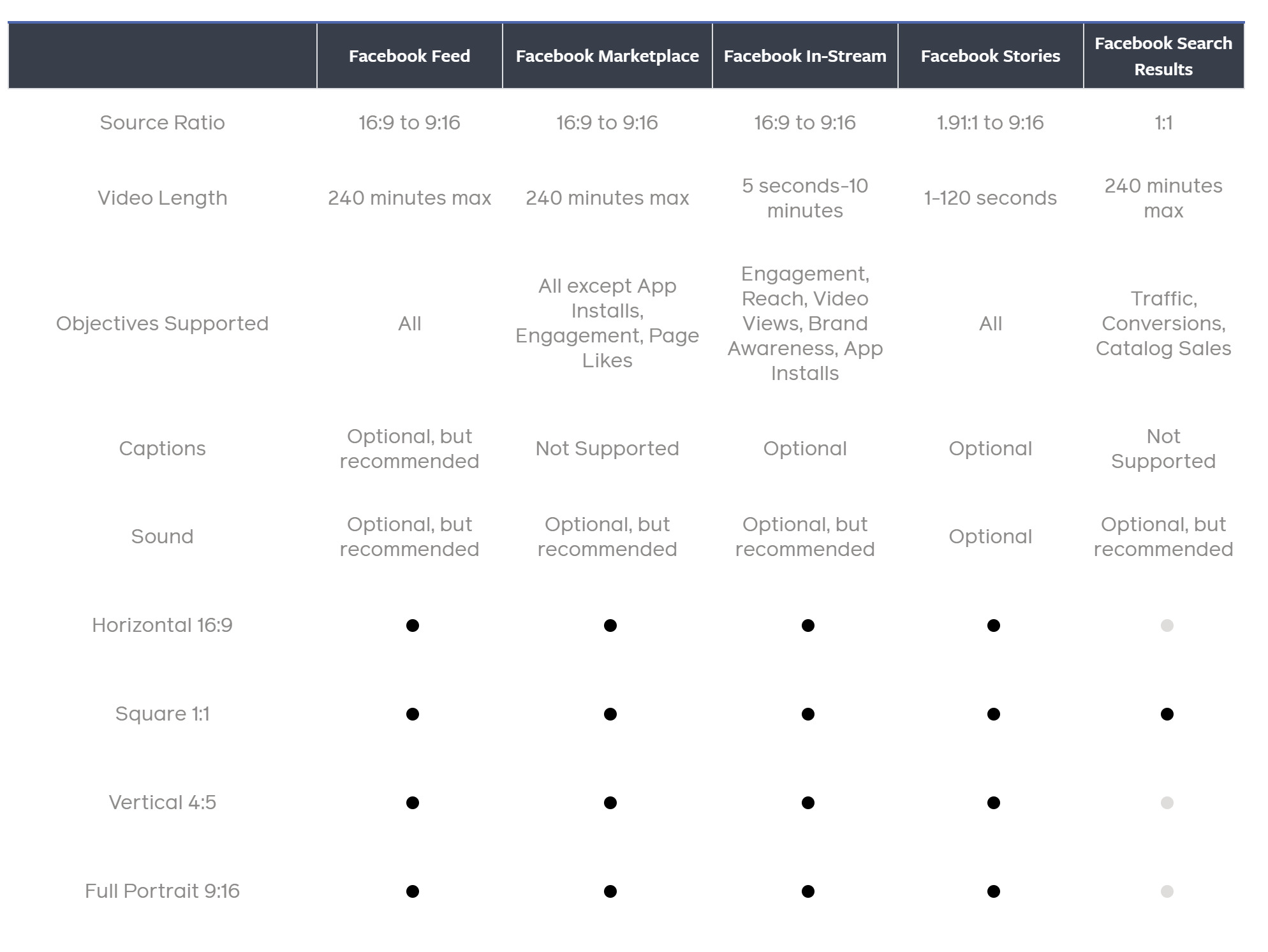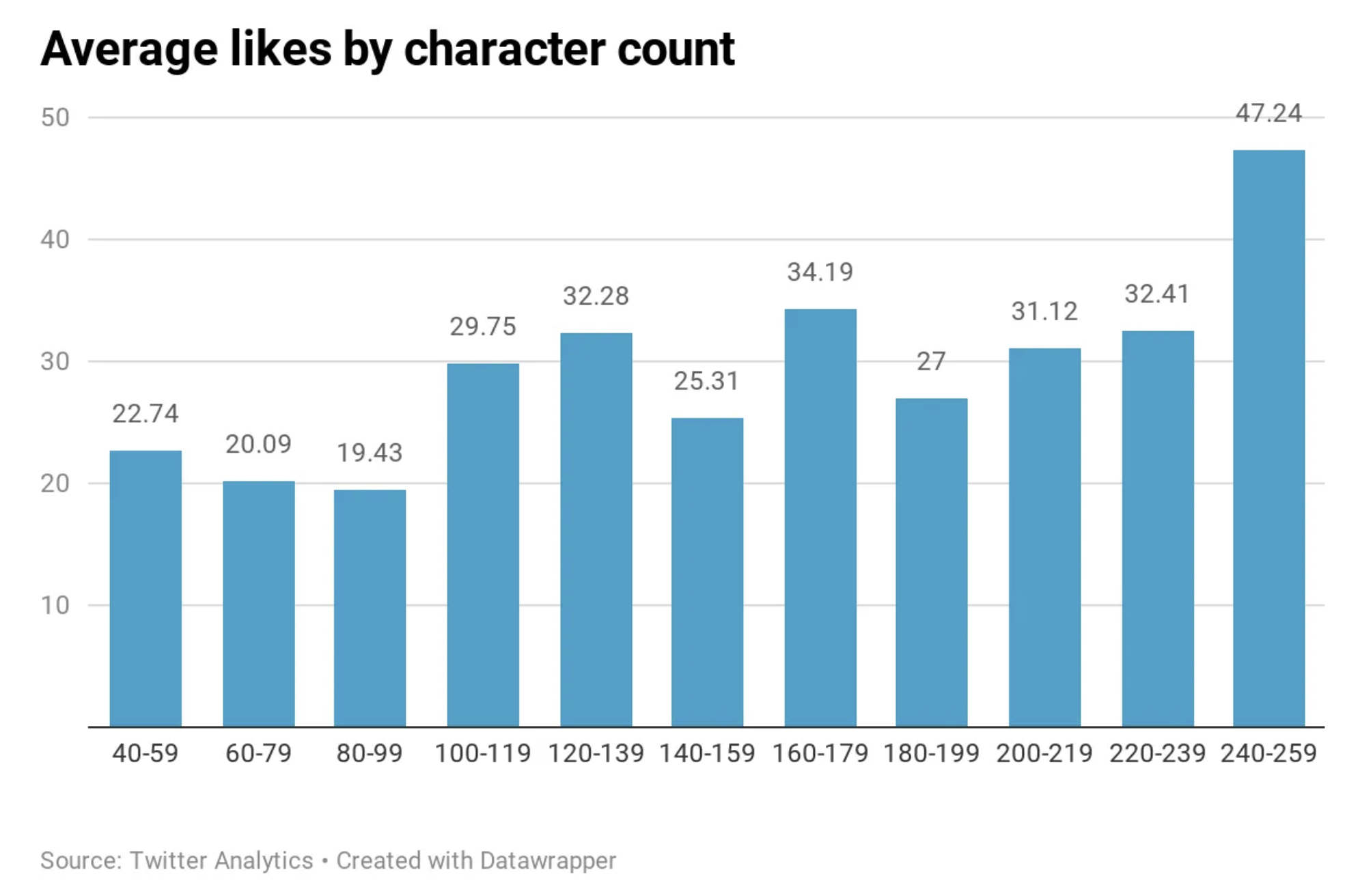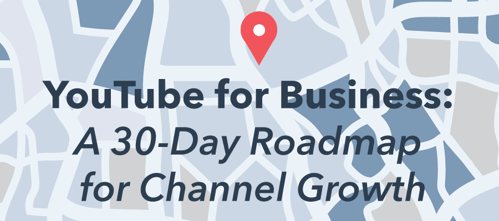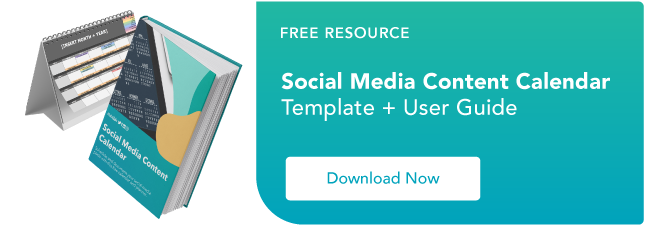MARKETING
The Ideal Length for Instagram, Facebook, Twitter, & LinkedIn Posts

When it comes to writing text for your blog and social media posts, many marketers wonder, “But what’s the character limit?”
It’s never a simple question — sometimes, it’s answered by parameters established by certain channels. And on other occasions, it’s more a question of what’s ideal.
For example, you probably know the character limit for a tweet is 140, but did you know that the ideal length is actually less than that? (Hold tight — we’ll explain why.)
While we’ve written before about optimizing your actual content, we thought it would be helpful to gather the numbers of character limits — both enforced and ideal — for different online channels, all in one place.
Below, you’ll find a more detailed guide to character limits and ideal character counts for posts on your blog, Facebook, Twitter, LinkedIn, Instagram, SnapChat, and YouTube.
The Length & Character Count for Everything on the Internet
1. Blog Posts

Quick reference:
- Post length: 1,400 – 2,100 words
- Title: Under 60 characters
- Meta Description: Under 155 characters
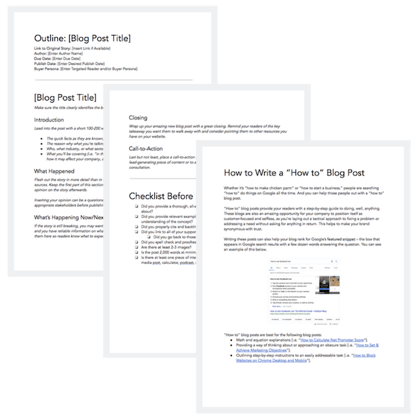
Featured Resource: 6 Free Blog Post Templates
Post Body
When it comes to the length of blog posts, there are a few different items to consider. For example:
- According to Medium, posts with an average read time of seven minutes captured the most attention. Though the data on this is from 2013, this number is still widely cited.
- The average reading speed of native English-speaking adults remains commonly cited as 200-300 words per minute, based on the results of several studies.
- At that reading rate, the ideal post length is 1,400 to 2,100 words.
- That aligns with research previously conducted by Capsicum Mediaworks, which indicated that, on average, the top 10 results for most Google searches are between 2,000 and 2,500 words.
 Source: Capsicum Mediaworks
Source: Capsicum Mediaworks
But that’s just the post body — let’s have a look at the other areas of text that comprise a full blog post.
Title
The length of your title depends on your goals, and where it will appear.
Let’s start with SEO. Do you want this post to rank really well in search? It turns out, that often has to do with the dimensions of each entry on a search engine results page (SERP).
For Google, titles of search results are usually contained at a length of 600 pixels — which Moz measures as being able to display the first 50-60 characters of a title tag.
So, if you don’t want your title to get cut off in the search results, it might be best to keep it under 60 characters.
But when in doubt, you can double-check the length of your meta description and title tags with this handy tool from HigherVisibility, or you can use Moz’s title tag preview tool.
For Moz’s title tag tool, type in your headline and the tool will show you how it would appear in Google results.

Then, there’s optimizing your title for social sharing. On Twitter, for example, consider that each tweet has a limit of 280 characters — however, if you include an image, that doesn’t count toward the limit.
But consider that even the average shortened URL takes up about 23 characters — that leaves you with about 257 characters left for the title and any accompanying text.
In our own analysis at HubSpot, we found that headlines between 8–12 words in length got the most Twitter shares on average, while headlines with either 12 or 14 words got the most Facebook Likes.
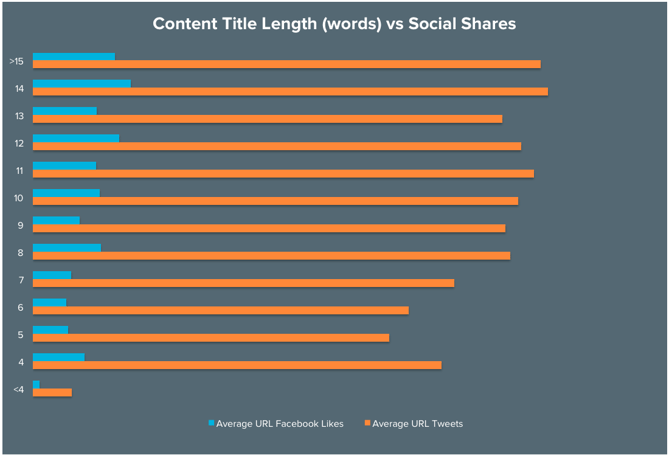
Meta Description
A meta description refers to the HTML attribute that explains the contents of a given webpage. It’s the short description you see on a SERP to “preview” what the page is about.
 Moz notes that Google seems to cut off most meta descriptions — sometimes called snippets — after roughly two lines of text. However, there’s some conjecture that, like title tags, it’s actually based on pixel count.
Moz notes that Google seems to cut off most meta descriptions — sometimes called snippets — after roughly two lines of text. However, there’s some conjecture that, like title tags, it’s actually based on pixel count.
In any case, it amounts to about 160 characters, though this particular outlet recommends keeping it at 155.
Again, you can double-check the length of your meta description and title tags with this handy tool from HigherVisibility.
 Image Source
Image Source2. Facebook
Quick reference:
- Status updates: 63,206-character maximum | Ideal length is 40 characters
- Video: 120-minute maximum | Ideal length is two minutes
Facebook Character Limit
Facebook offers a generous character limit of 63,206. However, you should aim to keep your posts to a sentence or two for better engagement.
Facebook’s character limit on status updates is 63,206. However, that’s far from ideal, says former HubSpot Social Media Marketing Manager Chelsea Hunersen.
“The social gurus will throw around the number 40 characters,” she says. “That data seems to be backed up by BuzzSumo’s ranking of HubSpot’s own Facebook Page.“
But why 40, specifically?
“Ideally,” Hunersen says, “you’ll want to use the copy in a status update to provide context for whatever you’re linking to.”
That said, she notes, the copy of the status update itself isn’t as important as the copy in the meta title or meta description that gets pulled in when you insert a link into your post. That’s right — social media posts have their own meta data too.
“Often, people look at the image of the article and then directly down at the meta title and meta description for context clues,” she explains. “A lot of people don’t realize you can change those.”
Even on Facebook, it’s still best to keep your meta title to fewer than 60 characters, and to 155 for meta descriptions.
There are some resources available to those familiar with coding that let you play around with social media metadata character counts, like these templates. But unless you’re a developer, we recommend keeping it short and sweet.
Video
While Facebook allows a maximum of 240 minutes for most videos (excluding Stories and Reels), we wouldn’t advise posting anything that long, unless you’re doing a special, social-media-only screening of a full-length film.
Facebook recommends keeping videos short to about 15 seconds so viewers are more likely to watch to the end.
3. Twitter
Quick reference:
- Tweets: 280-character maximum
- Does not include images, videos, or polls
- Ideal length is 240-259 characters
- Hashtags: No more than two
- Videos: Maximum length is two minutes and 20 seconds

Featured Resource: How to Use Twitter for Business
Twitter Character Count
In recent years, Twitter doubled its tweet character count from 140 to 280.
Marketers everywhere rejoiced when Twitter finally eased up on its character count parameters, and such media as images, videos, and polls, as well as quoted tweets, ceased counting toward its 140-character limit.
Still, the “Quote Tweet” feature remains available, providing even greater character-saving measures. That happens when you press the rotating arrow icon to retweet a post, and then add a comment in the text box provided. You’ve still got 280 characters all to yourself to comment.

Ideal Length Overall
Twitter differs from other platforms in the sense that longer tweets tend to perform better and get the most engagement.
According to SEO expert Kurt Gessler, tweets with 240-259 characters tend to get the most likes.
The same goes for hashtags. Twitter recommends keeping your hashtags short, easy to remember, and easy to spell. The platform also suggests sticking to only one or two hashtags at the most.
Videos
You can post a video on Twitter by importing a video or recording it using the Twitter app. In any case, the maximum video length is two minutes and 20 seconds if you’re not subscribed to Twitter Blue.
Twitter Blue subscribers can upload videos of up to 60 minutes when posting from the website, and subscribers on the app can post videos of up to 10 minutes.
4. LinkedIn
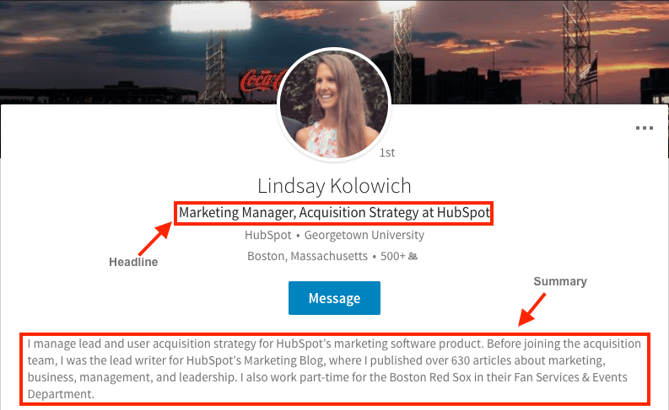
Profiles
Here’s a handy list of some of LinkedIn’s most important profile character maximums :
- Professional headline: 120
- Summary: 2,000
- Position title: 100
- Position description: 2,000 (200 character minimum)
LinkedIn Post Character Limit
LinkedIn statuses on company pages can be up to 700 characters while individuals can post updates up to 1,300 characters long.
Foote also notes that, “if you select to also post on Twitter from LinkedIn, only the first 140 characters will show on your Twitter post.”
Featured Resource: How to Use LinkedIn for Business & Marketing
Original Content
With LinkedIn’s publishing platform, users can now compose and share original written content with their networks, or publicly. Of course, that comes with its own character counts, according to Foote:
- Post headline: 100
- Post body: 40,000
LinkedIn Summary Limit
There is not a hard Summary limit, but users can fill in two lines or 200-250 characters before triggering a See More call-to-action.
5. Instagram
Quick reference:
Since Instagram is, first and foremost, a platform for sharing photos and videos, the primary focus is typically your visual content. However, it’s always helpful to provide some context, and let users know what they’re looking at.
Given that, here are some helpful character counts for the text you include with your visual content:
While Instagram doesn’t seem to specify a maximum total number of caption characters, it does note that, within users’ feeds, the caption is cut off after the first three lines. For that reason, it’s advised to limit captions to 125 characters.
However, don’t leave out important information just for the sake of keeping your entire caption visible. Instead, frontload it with crucial details and calls-to-action, leaving any hashtags, @mentions, or extraneous information for the end.
As for Instagram Stories, there doesn’t seem to be a ton of detail on character limits there, either. However, because the text overlays the visual content — which is the focus — don’t obscure too much of the photo or video with a caption.
Instagram Bio Limit
Instagram’s bio limit is 160 characters
Here’s a quick example of a short Instagram bio from my colleague.

Instagram User Name Limit
An Instagram user name can be up to 30 characters.
6. Snapchat
Quick reference:
- Character limit: 80 per post
Speaking of not obscuring visual content — that brings us to Snapchat.
Instagram Stories was, many believe, an effort to emulate the features of Snapchat, to create an opportunity for users to share quickly-disappearing photos and videos.
And again, because the focus here is on the visual, you’ll want to prevent distracting viewers from it with too much text.
According to Teen Vogue, Snapchat’s character limit is 80 per post, which is more than double its previous 31-character limit.
And, if you’re looking for more guidance, just look to this particular app’s name, and remember the “snap” element of it — a word that implies brevity — and try not to ramble. Here’s a great example of how SXSW uses its captions efficiently:
7. YouTube
Featured Resource: YouTube for Business – A 30-Day Roadmap
Here we have yet another network that’s focused on visual content, leading some to incorrectly assume that accompanying text — like titles and descriptions — don’t matter as much.
That’s not entirely false — as a video-hosting platform, YouTube should primarily be used to showcase a brand’s quality videos. However, like any other visual content, it needs context. People need to know what they’re watching, who it’s from, and why it matters.
Unfortunately, YouTube doesn’t appear to provide any specific parameters over its character counts — except for your channel description, which according to the official help site is limited to 1,000 characters.
But other than that, it seems that the only guideline available is the alert display that lets you know, “Your [title or description] is too long,” if you’ve entered too much text in either of those fields.
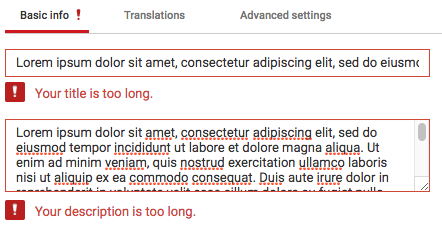
In this case, we would advise taking the same approach as adding text to support your visuals on Instagram and Snapchat.
Like the former, a video’s description is cut off after the first line or two, so frontload the most important descriptors and CTAs, leaving extra details for the end.
Show Your Character
As you set out to determine the length of your text, regardless of the platform, remember to do so with the user in mind.
Many of these channel-mandated character limits are established for that reason — to keep audiences from getting bored or overwhelmed.
Like anything else in marketing, however, it’s never an exact science, despite the best data. We encourage you to follow these guidelines, but don’t be afraid to experiment if they don’t always work.
Test different amounts of text within your various channels, and keep track of how each post performs.
From there, you can make decisions about which types of content, as well as its accompanying titles and descriptions, are the most well-received from your audience.
Editor’s Note: This post was originally published in January 2016 and was updated in December 2019 for accuracy and comprehensiveness.
MARKETING
Advertising in local markets: A playbook for success

Many brands, such as those in the home services industry or a local grocery chain, market to specific locations, cities or regions. There are also national brands that want to expand in specific local markets.
Regardless of the company or purpose, advertising on a local scale has different tactics than on a national scale. Brands need to connect their messaging directly with the specific communities they serve and media to their target demo. Here’s a playbook to help your company succeed when marketing on a local scale.
1. Understand local vs. national campaigns
Local advertising differs from national campaigns in several ways:
- Audience specificity: By zooming in on precise geographic areas, brands can tailor messaging to align with local communities’ customs, preferences and nuances. This precision targeting ensures that your message resonates with the right target audience.
- Budget friendliness: Local advertising is often more accessible for small businesses. Local campaign costs are lower, enabling brands to invest strategically within targeted locales. This budget-friendly nature does not diminish the need for strategic planning; instead, it emphasizes allocating resources wisely to maximize returns. As a result, testing budgets can be allocated across multiple markets to maximize learnings for further market expansion.
- Channel selection: Selecting the correct channels is vital for effective local advertising. Local newspapers, radio stations, digital platforms and community events each offer advantages. The key lies in understanding where your target audience spends time and focusing efforts to ensure optimal engagement.
- Flexibility and agility: Local campaigns can be adjusted more swiftly in response to market feedback or changes, allowing brands to stay relevant and responsive.
Maintaining brand consistency across local touchpoints reinforces brand identity and builds a strong, recognizable brand across markets.
2. Leverage customized audience segmentation
Customized audience segmentation is the process of dividing a market into distinct groups based on specific demographic criteria. This marketing segmentation supports the development of targeted messaging and media plans for local markets.
For example, a coffee chain might cater to two distinct segments: young professionals and retirees. After identifying these segments, the chain can craft messages, offers and media strategies relating to each group’s preferences and lifestyle.
To reach young professionals in downtown areas, the chain might focus on convenience, quality coffee and a vibrant atmosphere that is conducive to work and socializing. Targeted advertising on Facebook, Instagram or Connected TV, along with digital signage near office complexes, could capture the attention of this demographic, emphasizing quick service and premium blends.
Conversely, for retirees in residential areas, the chain could highlight a cozy ambiance, friendly service and promotions such as senior discounts. Advertisements in local print publications, community newsletters, radio stations and events like senior coffee mornings would foster a sense of community and belonging.
Dig deeper: Niche advertising: 7 actionable tactics for targeted marketing
3. Adapt to local market dynamics
Various factors influence local market dynamics. Brands that navigate changes effectively maintain a strong audience connection and stay ahead in the market. Here’s how consumer sentiment and behavior may evolve within a local market and the corresponding adjustments brands can make.
- Cultural shifts, such as changes in demographics or societal norms, can alter consumer preferences within a local community. For example, a neighborhood experiencing gentrification may see demand rise for specific products or services.
- Respond by updating your messaging to reflect the evolving cultural landscape, ensuring it resonates with the new demographic profile.
- Economic conditions are crucial. For example, during downturns, consumers often prioritize value and practicality.
- Highlight affordable options or emphasize the practical benefits of your offerings to ensure messaging aligns with consumers’ financial priorities. The impact is unique to each market and the marketing message must also be dynamic.
- Seasonal trends impact consumer behavior.
- Align your promotions and creative content with changing seasons or local events to make your offerings timely and relevant.
- New competitors. The competitive landscape demands vigilance because new entrants or innovative competitor campaigns can shift consumer preferences.
- Differentiate by focusing on your unique selling propositions, such as quality, customer service or community involvement, to retain consumer interest and loyalty.
4. Apply data and predictive analytics
Data and predictive analytics are indispensable tools for successfully reaching local target markets. These technologies provide consumer behavior insights, enabling you to anticipate market trends and adjust strategies proactively.
- Price optimization: By analyzing consumer demand, competitor pricing and market conditions, data analytics enables you to set prices that attract customers while ensuring profitability.
- Competitor analysis: Through analysis, brands can understand their positioning within the local market landscape and identify opportunities and threats. Predictive analytics offer foresight into competitors’ potential moves, allowing you to strategize effectively to maintain a competitive edge.
- Consumer behavior: Forecasting consumer behavior allows your brand to tailor offerings and marketing messages to meet evolving consumer needs and enhance engagement.
- Marketing effectiveness: Analytics track the success of advertising campaigns, providing insights into which strategies drive conversions and sales. This feedback loop enables continuous optimization of marketing efforts for maximum impact.
- Inventory management: In supply chain management, data analytics predict demand fluctuations, ensuring inventory levels align with market needs. This efficiency prevents stockouts or excess inventory, optimizing operational costs and meeting consumer expectations.
Dig deeper: Why you should add predictive modeling to your marketing mix
5. Counter external market influences
Consider a clothing retailer preparing for a spring collection launch. By analyzing historical weather data and using predictive analytics, the brand forecasts an unseasonably cool start to spring. Anticipating this, the retailer adjusts its campaign to highlight transitional pieces suitable for cooler weather, ensuring relevance despite an unexpected chill.
Simultaneously, predictive models signal an upcoming spike in local media advertising rates due to increased market demand. Retailers respond by reallocating a portion of advertising budgets to digital channels, which offer more flexibility and lower costs than traditional media. This shift enables brands to maintain visibility and engagement without exceeding budget, mitigating the impact of external forces on advertising.
6. Build consumer confidence with messaging
Localized messaging and tailored customer service enhance consumer confidence by demonstrating your brand’s understanding of the community. For instance, a grocery store that curates cooking classes featuring local cuisine or sponsors community events shows commitment to local culture and consumer interests.
Similarly, a bookstore highlighting local authors or topics relevant to the community resonates with local customers. Additionally, providing service that addresses local needs — such as bilingual service and local event support — reinforces the brand’s values and response to the community.
Through these localized approaches, brands can build trust and loyalty, bridging the gap between corporate presence and local relevance.
7. Dominate with local advertising
To dominate local markets, brands must:
- Harness hyper-targeted segmentation and geo-targeted advertising to reach and engage precise audiences.
- Create localized content that reflects community values, engage in community events, optimize campaigns for mobile and track results.
- Fine-tune strategies, outperform competitors and foster lasting relationships with customers.
These strategies will enable your message to resonate with local consumers, differentiate you in competitive markets and ensure you become a major player in your specific area.
Dig deeper: The 5 critical elements for local marketing success
Opinions expressed in this article are those of the guest author and not necessarily MarTech. Staff authors are listed here.
MARKETING
Battling for Attention in the 2024 Election Year Media Frenzy


As we march closer to the 2024 U.S. presidential election, CMOs and marketing leaders need to prepare for a significant shift in the digital advertising landscape. Election years have always posed unique challenges for advertisers, but the growing dominance of digital media has made the impact more profound than ever before.
In this article, we’ll explore the key factors that will shape the advertising environment in the coming months and provide actionable insights to help you navigate these turbulent waters.
The Digital Battleground
The rise of cord-cutting and the shift towards digital media consumption have fundamentally altered the advertising landscape in recent years. As traditional TV viewership declines, political campaigns have had to adapt their strategies to reach voters where they are spending their time: on digital platforms.


According to a recent report by eMarketer, the number of cord-cutters in the U.S. is expected to reach 65.1 million by the end of 2023, representing a 6.9% increase from 2022. This trend is projected to continue, with the number of cord-cutters reaching 72.2 million by 2025.
Moreover, a survey conducted by Pew Research Center in 2023 found that 62% of U.S. adults do not have a cable or satellite TV subscription, up from 61% in 2022 and 50% in 2019. This data further underscores the accelerating shift away from traditional TV and towards streaming and digital media platforms.
As these trends continue, political advertisers will have no choice but to follow their audiences to digital channels. In the 2022 midterm elections, digital ad spending by political campaigns reached $1.2 billion, a 50% increase from the 2018 midterms. With the 2024 presidential election on the horizon, this figure is expected to grow exponentially, as campaigns compete for the attention of an increasingly digital-first electorate.
For brands and advertisers, this means that the competition for digital ad space will be fiercer than ever before. As political ad spending continues to migrate to platforms like Meta, YouTube, and connected TV, the cost of advertising will likely surge, making it more challenging for non-political advertisers to reach their target audiences.
To navigate this complex and constantly evolving landscape, CMOs and their teams will need to be proactive, data-driven, and willing to experiment with new strategies and channels. By staying ahead of the curve and adapting to the changing media consumption habits of their audiences, brands can position themselves for success in the face of the electoral advertising onslaught.
Rising Costs and Limited Inventory
As political advertisers flood the digital market, the cost of advertising is expected to skyrocket. CPMs (cost per thousand impressions) will likely experience a steady climb throughout the year, with significant spikes anticipated in May, as college students come home from school and become more engaged in political conversations, and around major campaign events like presidential debates.


For media buyers and their teams, this means that the tried-and-true strategies of years past may no longer be sufficient. Brands will need to be nimble, adaptable, and willing to explore new tactics to stay ahead of the game.
Black Friday and Cyber Monday: A Perfect Storm
The challenges of election year advertising will be particularly acute during the critical holiday shopping season. Black Friday and Cyber Monday, which have historically been goldmines for advertisers, will be more expensive and competitive than ever in 2024, as they coincide with the final weeks of the presidential campaign.
To avoid being drowned out by the political noise, brands will need to start planning their holiday campaigns earlier than usual. Building up audiences and crafting compelling creative assets well in advance will be essential to success, as will a willingness to explore alternative channels and tactics. Relying on cold audiences come Q4 will lead to exceptionally high costs that may be detrimental to many businesses.
Navigating the Chaos
While the challenges of election year advertising can seem daunting, there are steps that media buyers and their teams can take to mitigate the impact and even thrive in this environment. Here are a few key strategies to keep in mind:
Start early and plan for contingencies: Begin planning your Q3 and Q4 campaigns as early as possible, with a focus on building up your target audiences and developing a robust library of creative assets.
Be sure to build in contingency budgets to account for potential cost increases, and be prepared to pivot your strategy as the landscape evolves.


Embrace alternative channels: Consider diversifying your media mix to include channels that may be less impacted by political ad spending, such as influencer marketing, podcast advertising, or sponsored content. Investing in owned media channels, like email marketing and mobile apps, can also provide a direct line to your customers without the need to compete for ad space.
Owned channels will be more important than ever. Use cheaper months leading up to the election to build your email lists and existing customer base so that your BF/CM can leverage your owned channels and warm audiences.
Craft compelling, shareable content: In a crowded and noisy advertising environment, creating content that resonates with your target audience will be more important than ever. Focus on developing authentic, engaging content that aligns with your brand values and speaks directly to your customers’ needs and desires.
By tapping into the power of emotional triggers and social proof, you can create content that not only cuts through the clutter but also inspires organic sharing and amplification.
Reflections
The 2024 election year will undoubtedly bring new challenges and complexities to the world of digital advertising. But by staying informed, adaptable, and strategic in your approach, you can navigate this landscape successfully and even find new opportunities for growth and engagement.
As a media buyer or agnecy, your role in steering your brand through these uncharted waters will be critical. By starting your planning early, embracing alternative channels and tactics, and focusing on creating authentic, resonant content, you can not only survive but thrive in the face of election year disruptions.
So while the road ahead may be uncertain, one thing is clear: the brands that approach this challenge with creativity, agility, and a steadfast commitment to their customers will be the ones that emerge stronger on the other side.
MARKETING
Tinuiti Marketing Analytics Recognized by Forrester

Rapid Media Mix Modeling and Proprietary Tech Transform Brand Performance
Tinuiti, the largest independent full-funnel performance marketing agency, has been included in a recent Forrester Research report titled, “The Marketing Analytics Landscape, Q2 2024.” This report comprehensively overviews marketing analytics markets, use cases, and capabilities. B2C marketing leaders can use this research by Principal Analyst Tina Moffett to understand the intersection of marketing analytics capabilities and use cases to determine the vendor or service provider best positioned for their analytics and insights needs. Moffett describes the top marketing analytics markets as advertising agencies, marketing dashboards and business intelligence tools, marketing measurement and optimization platforms and service providers, and media analytics tools.
As an advertising agency, we believe Tinuiti is uniquely positioned to manage advertising campaigns for brands including buying, targeting, and measurement. Our proprietary measurement technology, Bliss Point by Tinuiti, allows us to measure the optimal level of investment to maximize impact and efficiency. According to the Forrester report, “only 30% of B2C marketing decision-makers say their organization uses marketing or media mix modeling (MMM),” so having a partner that knows, embraces, and utilizes MMM is important. As Tina astutely explains, data-driven agencies have amplified their marketing analytics competencies with data science expertise; and proprietary tools; and tailored their marketing analytics techniques based on industry, business, and data challenges.
Our Rapid Media Mix Modeling sets a new standard in the market with its exceptional speed, precision, and transparency. Our patented tech includes Rapid Media Mix Modeling, Always-on Incrementality, Brand Equity, Creative Insights, and Forecasting – it will get you to your Marketing Bliss Point in each channel, across your entire media mix, and your overall brand performance.
As a marketing leader you may ask yourself:
- How much of our marketing budget should we allocate to driving store traffic versus e-commerce traffic?
- How should we allocate our budget by channel to generate the most traffic and revenue possible?
- How many customers did we acquire in a specific region with our media spend?
- What is the impact of seasonality on our media mix?
- How should we adjust our budget accordingly?
- What is the optimal marketing channel mix to maximize brand awareness?
These are just a few of the questions that Bliss Point by Tinuiti can help you answer.
Learn more about our customer-obsessed, product-enabled, and fully integrated approach and how we’ve helped fuel full-funnel outcomes for the world’s most digital-forward brands like Poppi & Toms.
The Landscape report is available online to Forrester customers or for purchase here.
-

 MARKETING6 days ago
MARKETING6 days ago5 Psychological Tactics to Write Better Emails
-

 SEARCHENGINES7 days ago
SEARCHENGINES7 days agoWeekend Google Core Ranking Volatility
-

 PPC6 days ago
PPC6 days ago20 Neuromarketing Techniques & Triggers for Better-Converting Copy
-

 SEO7 days ago
SEO7 days agoWordPress Releases A Performance Plugin For “Near-Instant Load Times”
-
SEARCHENGINES6 days ago
Daily Search Forum Recap: April 15, 2024
-

 SEO6 days ago
SEO6 days agoReddit Post Ranks On Google In 5 Minutes
-

 SEO4 days ago
SEO4 days agoGoogle Clarifies Vacation Rental Structured Data
-

 PPC5 days ago
PPC5 days ago4 New Google Ads Performance Max Updates: What You Need to Know


![The Ideal Length for Instagram, Facebook, Twitter, & LinkedIn Posts → Free Download: Social Media Calendar Template [Access Now]](https://articles.entireweb.com/wp-content/uploads/2023/05/1684242838_622_The-5-Types-of-Social-Media-and-Pros-Cons.png)
